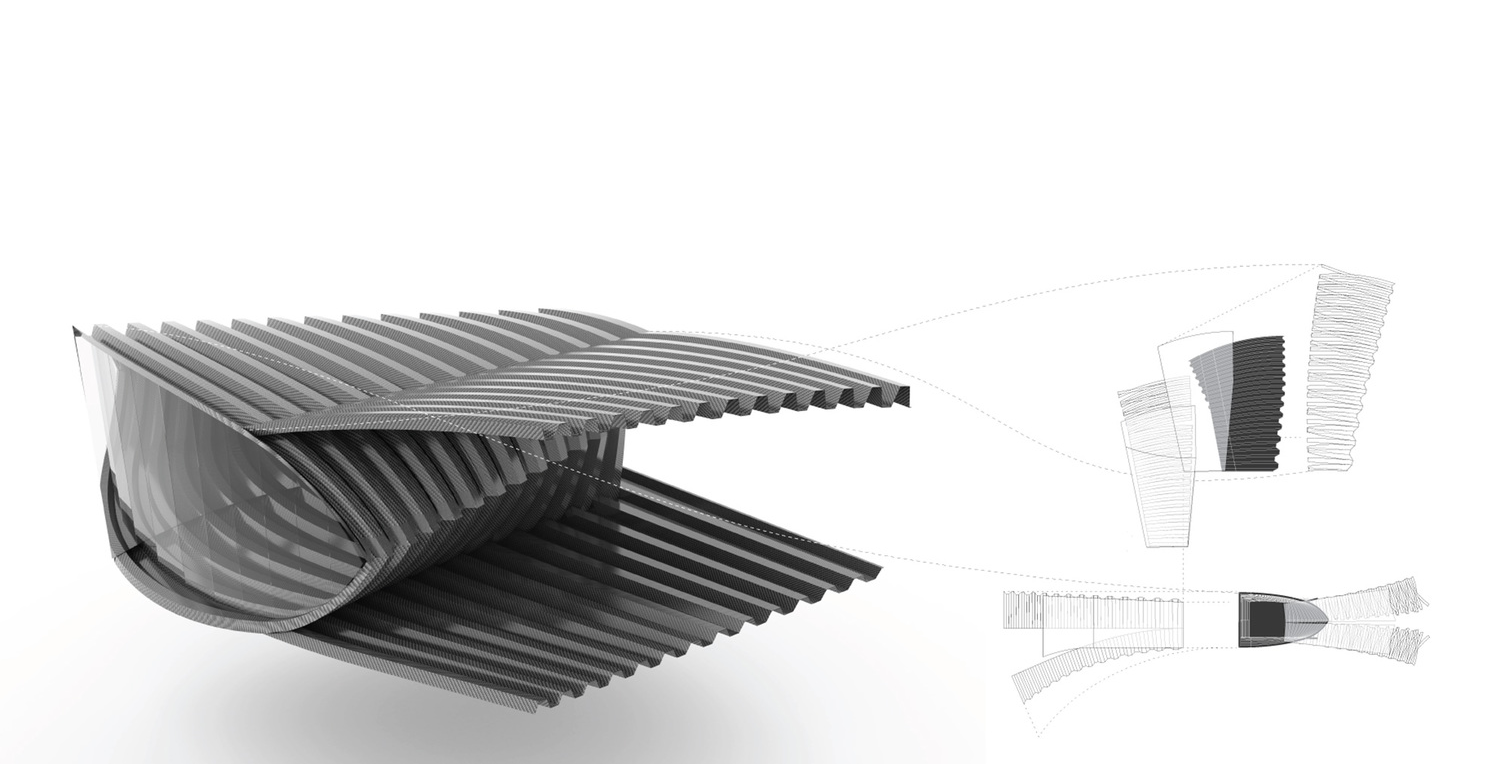






Along with a team of two other students, I designed a modern interpretation of Lautner’s pillars of design: immerse the visitor in the atmosphere of the space, collapse the foreground and background conditions into distinct planes, and eliminate a single vantage point.

The Chemosphere, designed by John Lautner in 1960, is a misunderstood structure teetering on the edge of the Los Angeles hills. The design, often viewed as a representation of “futuristic” living, can actually be described as an analysis of depth of field. Lautner’s unique structure creates an edge condition in the planes of the walls that collapses the living spaces into a foreground condition and allows for the city backdrop to become a background for the interior scene. In this sense, the middleground is completely dissolved.

The quarter plan is a reduced form of Lautner’s octagonal structure but works in similar methods by mirroring the space along the flat wall, duplicating both the room and viewer. To accommodate the immersed self, the room design creates an interior based condition that absorbs the subject, privileging no single point of view. Interior furnishings and occupants serve to populate an intimate foreground condition while the field condition of Los Angeles populates a distant background. The subject’s vision is transported via the radial plan as it stretches continuously toward the periphery and horizon.